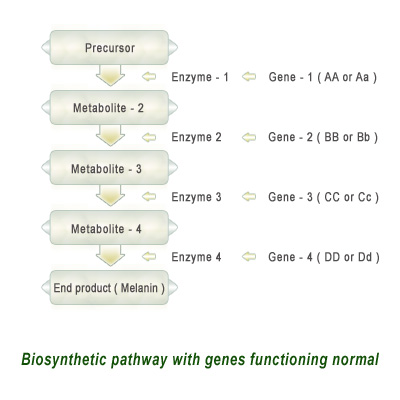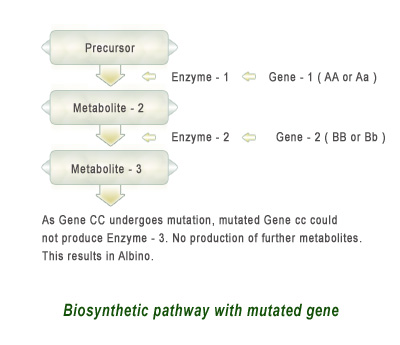What is Biochemical Basis of Epistasis?
Every character is the result of combined action of many genes. Genes expresses themselves by the production of certain enzymes.
Genes do not give final result in one step. There is stepwise process for conversion of precursor into final product, with each step mediated by certain specific enzyme.
Now, epistasis is the masking of effect of one dominant gene by the other gene. How this happens?
The simplest example to explain biochemical basis of epistasis is albanism.
Albinism develops due to the lack of pigment called melanin. This melanin is the one which, produces character black color. Now, as we have seen above, like all other cellular chemical reactions, melanin synthesis is not one step reaction. Rather it is a four step process with each step mediated by a specific enzyme. These enzymes which catalyze the reaction at every step are produced by some specific dominant gene.
We can get the idea of process with the help of following figure. Procedure is summarized as follows.
- Precursor, the initial product is converted into end product, melanin.
- Intermediate products (metabolites) are produced after every step.
- Specific enzymes are required at each step to catalyze the reaction. Each enzyme produced by specific gene.
- If a gene coding for any of these enzymes becomes mutant (get changed), it will be unable to produce the desired metabolite, which it produces in wild (normal) form.
- So, naturally, the conversion process could not proceed further, i.e. gets blocked at that point.
- The final product melanin is not synthesized if such happens.
- Here, gene-3 masked the effect of gene-4, process is blocked at this step. As melanin is not produced, albanism develops. This is the epistasis.


